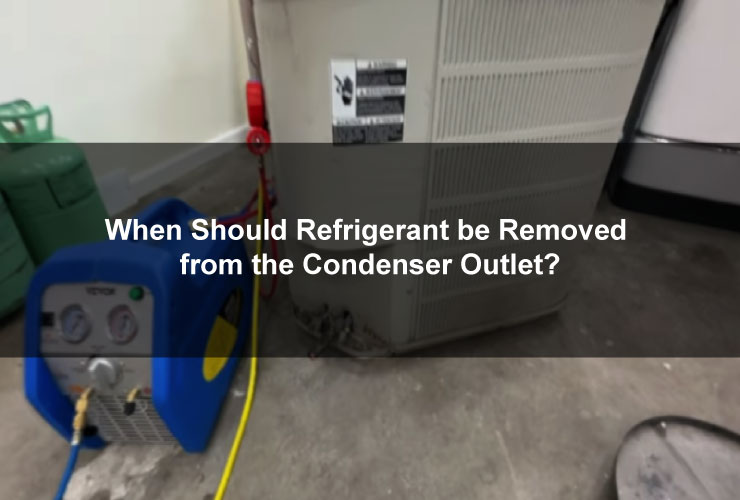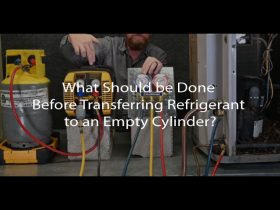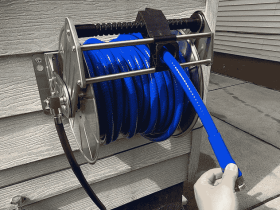When Should Refrigerant be Removed from the Condenser Outlet?
A. When the condenser is on the roof.
B. When the condenser is below the receiver.
C. When the evaporator has a small leak.
D. When the compressor is inoperative.
Answer: Refrigerant should be removed from the condenser outlet when the compressor is inoperative. Therefore, the correct answer is option D. When the compressor is inoperative.
Explanation
Refrigerant must be removed from the condenser outlet when the compressor is inoperative to prevent system pressure buildup and ensure safe handling during repairs or maintenance. This helps maintain proper system functionality and avoids potential damage.
Read more:
1. Refrigerants: What They Are, Types, Refrigeration Cycle, and Their Environmental Impact
2. What is R-134a Refrigerant? Exploring Its Properties and Potential Risks
3. What Should be Done Before Transferring Refrigerant to an Empty Cylinder?
4. What Must be Done to the Refrigerant that is Vented off the Top When Filling a Charging Cylinder?
5. How Can You Speed Up the Removal of the Refrigerant Charge from a System?
6. How Can You Speed Up the Removal of the Refrigerant Charge from a System?
7. Where Does Refrigerant Go After it Leaves the Purge Unit of a Low-Pressure Centrifugal System?
8. Before Beginning a Refrigerant Recovery Procedure, It is Always Necessary to;
9. A Very Large Refrigerant Leak Can Cause Suffocation Because Refrigerants;
10. When Recovery is First Started, at What Phase is the Refrigerant Removed to Save Recovery Time?
11. What Must be Done After Recovering the Liquid Refrigerant From a Low-Pressure Chiller?
12. Which Hydrocarbon Refrigerant is Approved for Retrofit Into Existing Household Refrigerators?











Leave a Review